I’m continuing my experiment with ancient grains. This month, I’m working with Emmer. As you may remember, last month, I decided that to really compare grains to grains, I should use the same or a similar bread recipe. Sprouted Wheat Bread (with flour) is one of my favorite breads so I decided it would be a good bread to use as the test comparison. I featured Sprouted Einkorn Bread last month. This month I’m featuring Sprouted Emmer Bread.
As I mentioned in my HBinFive Emmer Bread post, Emmer is an ancient grain that is plumper and longer than modern wheat grains. The grain is lower in gluten than regular wheat but higher in protein and fiber. Emmer has a bold-flavor and usually makes a heavy and dense bread compared to wheat bread. To make a lighter bread, I used a combination of sprouted Emmer grains, Emmer flour and bread flour.
Sprouted Emmer Bread
Adapted fromThe Pleasure of Whole-Grain Breads
by Beth Hensperger
Makes: 3 Medium loaves or 2 large loaves
Ingredients:
- 1/2 cup warm water
- 1 1/2 tablespoons (1 1/2 packages) active dry yeast
- Pinch of sugar
- Pinch of ginger
- 2 cups whole grain Emmer flour
- 1 cup nonfat dry milk powder
- 1 tablespoon salt
- 1 1/2 cups warm water
- 1/4 cup honey
- 4 tablespoons (1/2 stick) unsalted butter, at room temperature
- 2 cups sprouted Emmer berries, chopped
- 4 1/2 to 5 cups bread flour
- Wheat germ, for sprinkling
- Melted butter, for brushing
Step 1: Sprouting the Emmer Berries
Duration: 2 to 3 days
Makes: 2 cups
- 1/2 cup raw Emmer berries
Place the emmer berries in a bowl and add tepid water to cover by 1 inch. Let stand at room temperature for 6 to 8 hours.
Drain the emmer berries and rinse with fresh water. Divide between two 1-quart jars. Cover with cheesecloth and secure with a rubber band. I only used 1 jar.
Place the jars on their sides in a warm, dark place.
Twice a day, rinse and drain the emmer berries with tepid water poured through the cheesecloth. After 2 to 3 days, the emmer berries will sprout. Refrigerate in a plastic bag for up to 3 days. I sprouted my berries for about 2 days, then refrigerated them for 3 days until I had time to bake the bread.
Grind in a food processor fitted with the metal blade. Be careful not to over process; the berries should be chunky.
Tip: When you place the quart jars in a cool, dark place such as your cabinet, put them in a container so that the excess water drains into the container instead of your cabinet.
Step 2: Making the Bread
Pour 1/2 cup warm water into a small bowl. Sprinkle the yeast, sugar, and ginger over the water. Stir to dissolve and let stand until foamy, about 10 minutes.
In a large bowl using a whisk or in the bowl of your mixer, combine the emmer flour, milk powder, and salt. Since emmer is an ancient grain, it seemed more appropriate to mix the dough by hand rather than using a mixer.
Add the warm water, honey, and 4 tablespoons butter. Mix or beat for 1 minute. I used a Danish dough whisk.
Add the yeast mixture and beat 1 minute longer.
Add all the emmer berries and the bread flour, 1/2 cup a a time, beating on low speed until a soft dough that just clears the sides of the bowl forms, switching to a wooden spoon when necessary if making by hand. I used a Danish dough whisk for this part as well.
Turn the dough out onto a lightly floured work surface and knead until soft and spongy, 1 to 2 minutes for a machine mixed dough and 3 to 4 minutes for a hand-mixed dough, dusting with flour only 1 tablespoon at a time, just enough as needed to prevent sticking.
Place in a lightly greased deep container, turn once to coat the top with oil, and cover with plastic wrap.
Let rise at room temperature until double in bulk, 1 1/2 to 2 hours.
Grease three 8-by-4-inch loaf pans and sprinkle the bottom and sides with wheat germ. Turn the dough out onto the work surface and divide into 3 equal portions. Or, if you want bigger loaves, divide it into 2 equal portions. I opted for the bigger loaves so I divided it into two round balls to begin with.
Then I flattened each piece out on the counter and pat it portion into a rectangle and rolled into a loaf shape.
Press the seam closed with your fingers.
Place, seam side down, into the prepared pans.
Cover loosely with plastic wrap and let rise until level with the rims of the pans, about 1 hour.
About 20 minutes before baking, preheat the oven to 350 degrees F and position a rack in the center of the oven.
I decided to score these loaves. I don’t normally score loaf breads, but I saw some beautiful scored loaf breads at the Asheville Bread Baking Festival so I decided to give it a shot.
Bake for 45 to 50 minutes, or until crusty and golden.
Remove the loaves from the pans to cool on a rack.
Brush the tops with melted butter. Let the loaves cool, then slice and enjoy.
I put this loaf through my peanut butter test. It passed with flying colors. I enjoyed it with some organic peanut butter and a little homemade orange marmalade. Delicious!
This bread has been YeastSpotted. Please visit Wild Yeast to view all of the lovely breads in the roundup.
Thanks for joining me in the bread-baking blog.
Happy Baking!
Cathy
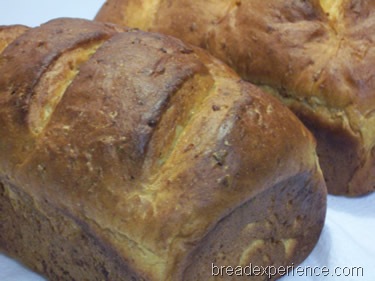
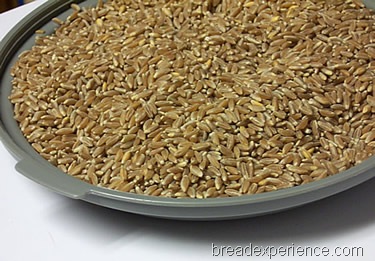
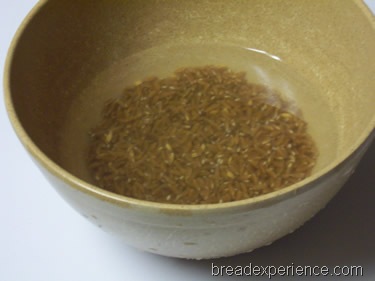
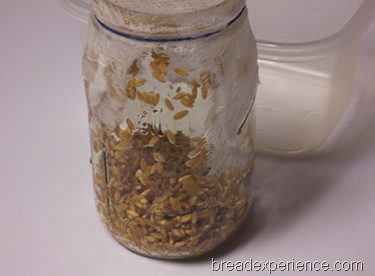
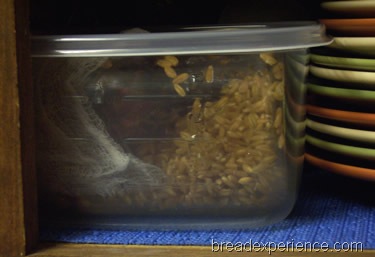
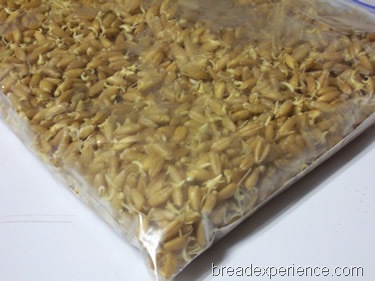
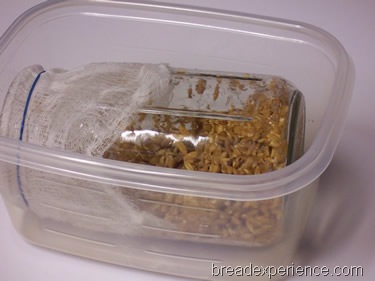
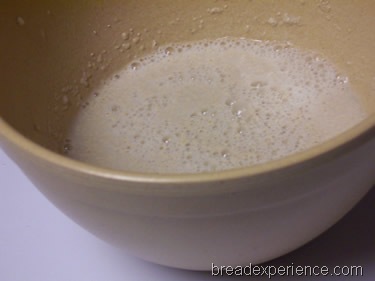
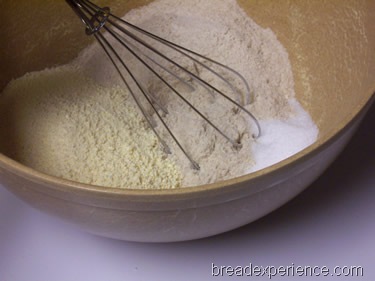
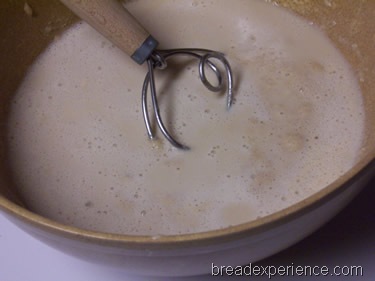
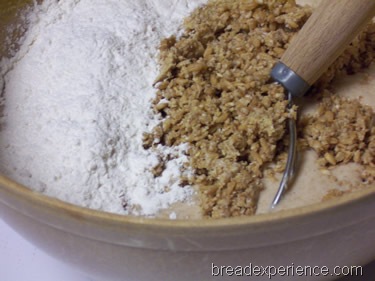
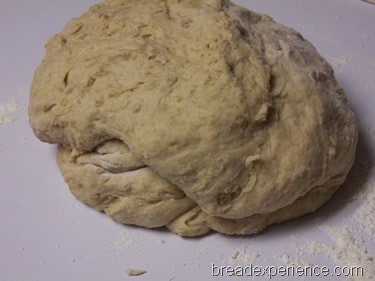
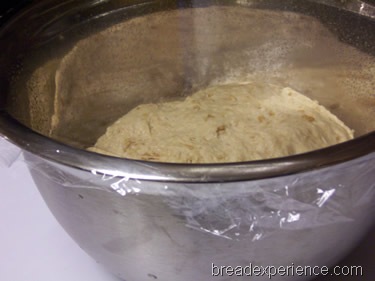
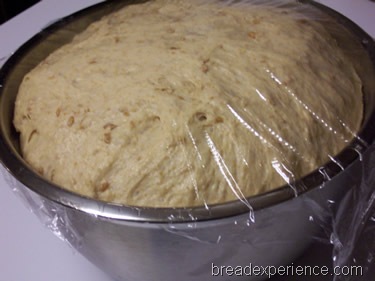
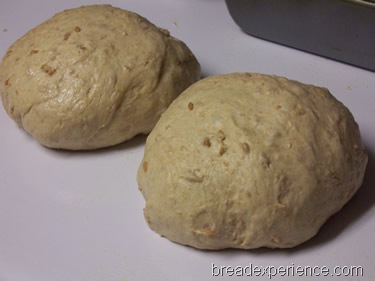
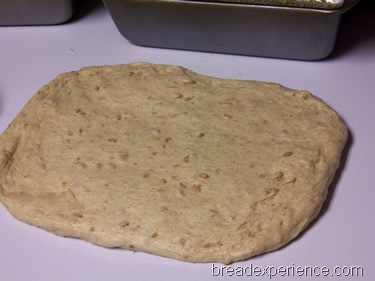
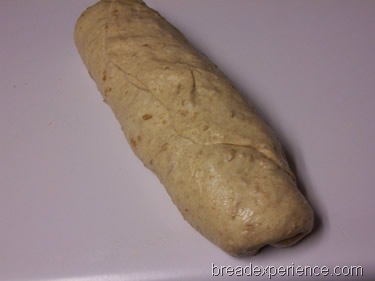
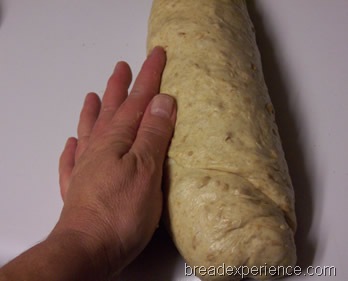
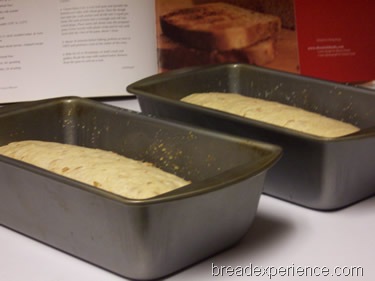
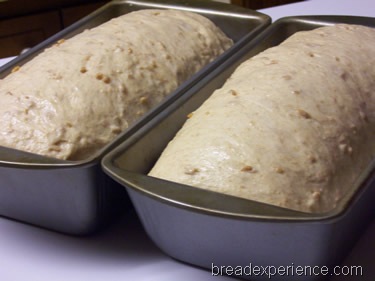
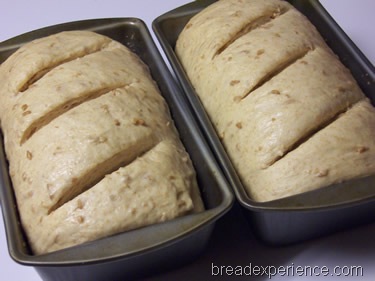
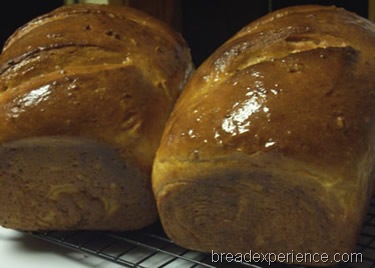
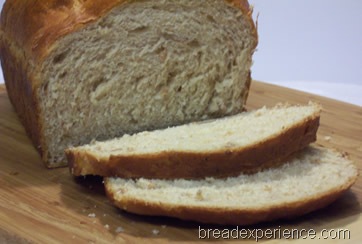
Melanie says
Looks really good!!! I’m in the process of sprouting some wheat berries now. I’ve made the sprouted wheat bread posted on your blog once before and we loved it! Maybe I’ll try scoring my loaves too. Have you tried sprouted barley bread?
Cathy (breadexperience) says
Hi Melanie, This bread is good. So far, I’ve really liked all of the sprouted breads I’ve made. Well, except for the one that turned out like a brick, but other than that one…Lol.
I have not tried sprouted barley bread yet, but it’s on my list. Hope to get to it soon.
hobby baker says
Oh those loaves are just beautiful! I must pick up some of Bluebird Farms Emmer, as they are a local source. This is the kind of bread my folks adore, I’ll have to try it when they visit.